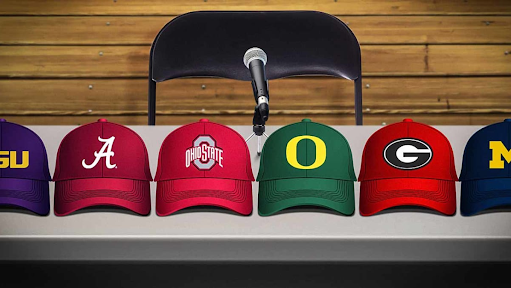Recruiting in the NCAA

The GIST: Forget conditioning — recruiting is arguably a team’s most important offseason task. The race to court top prospects is more cutthroat than a Taylor Swift Ticketmaster queue, and a program’s very future can hinge on its incoming freshman class. No pressure.
How it works: Coaches and recruiting coordinators spend their offseasons jet-setting around the country to scout future stars and convince them to consider their teams. And, with an assist from current players, they also host potential recruits for official and unofficial visits. It’s giving Greek life’s rush, sports edition.
- High schoolers can also reach out to coaches — in fact, that’s how many athletes’ recruiting journeys begin. The timing of athlete-initiated contact is not NCAA-regulated, although a coach or other rep’s response may be.
The restrictions: There are tons of rules around contact between prospective athletes and/or their parents and a program’s representatives, including new ones setting recruit age minimums. The recruitment calendar includes contact, evaluation, quiet, and dead periods, all governing the types of permissible contact based on specific sports’ season start and end dates.
- When a program and player swipe right on each other, the future athlete can make a verbal commitment and/or sign a National Letter of Intent (NLI) — a contract committing to play at least one season at their chosen school in return for financial aid.
- Verbal commits are nonbinding, but if a recruit backs out of an NLI for another school, they lose one year of eligibility and must be enrolled at the new institution for a year before suiting up (with a few exceptions).
Enjoying this article? Want more?

Sign up for The GIST and receive the latest sports news straight to your inbox three times a week.

